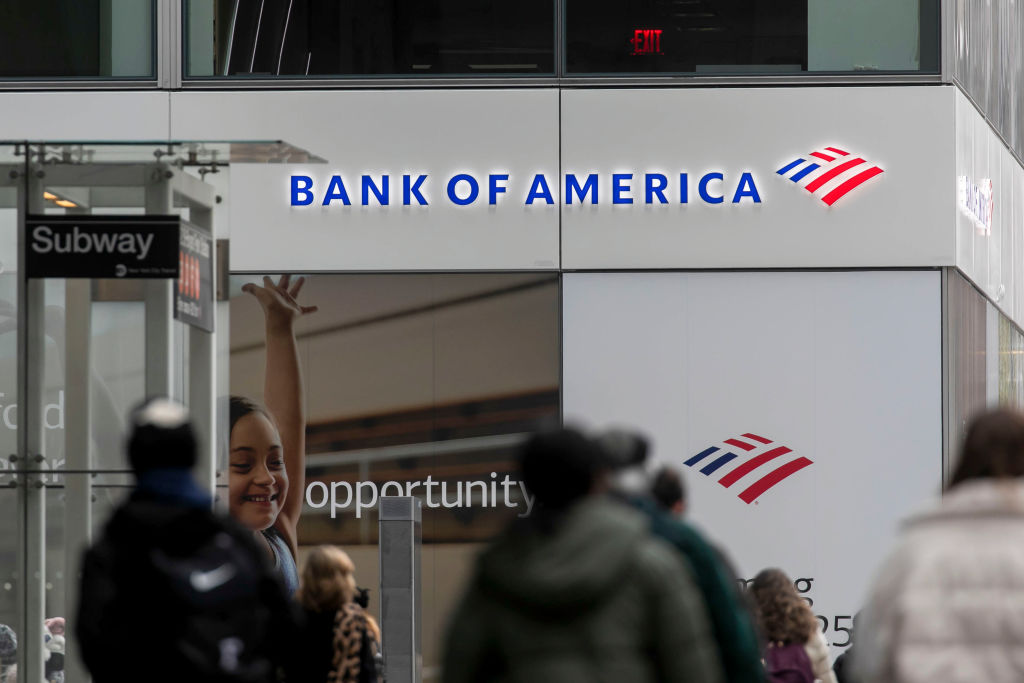Top Market Strategist Sees 35%-40% Drop in Stocks in Next Bear Market
Jim Stack says a downturn isn’t imminent, but with the bull market entering its seventh year caution is warranted.

Jim Stack watches Wall Street like a hawk—from 2,200 miles away, on the shores of Montana's stunning Whitefish Lake. Stack, president of InvesTech Research, a market analysis firm, and Stack Financial Management, its asset management business, maintains more than a century’s worth of market data that helps him forge a “safety-first” strategy. With the bull market turning 6 years old on March 9, Stack was already wary. The market’s swoon on March 6 following another stellar jobs report seemed to confirm his recent warnings about how good news on the economy can be bad news for stocks.
Kiplinger: You've become increasingly nervous about the stock market—why?
Stack: Every economic recovery and every bull market start out with widespread fears and doubt in the early years. But as the economic recovery and bull market mature, that doubt dissipates and those fears turn into optimism or even complacency. We're starting to see that today, characterized by the parabolic rise in margin debt (money borrowed to buy stocks) and the very low level of bearish investment advisers. One has to remember that by definition, bull markets peak when optimism is highest.
From just $107.88 $24.99 for Kiplinger Personal Finance
Become a smarter, better informed investor. Subscribe from just $107.88 $24.99, plus get up to 4 Special Issues

Sign up for Kiplinger’s Free Newsletters
Profit and prosper with the best of expert advice on investing, taxes, retirement, personal finance and more - straight to your e-mail.
Profit and prosper with the best of expert advice - straight to your e-mail.
You recently wrote that “boom” is the best word in an economic expansion, but the most dangerous for stock investors. Why should an economic boom worry investors?
Headlines about an economic boom represent the danger that this recovery is reaching a mature stage. “Boom” is a word that characteristically appears in the final stages of a bull market. It was prevalent in late 1968, before the '69-'70 bear market, it appeared in 1973 right at the start of the large '73-'74 bear market. In February of 2000, just before one of the biggest market tops ever, Business Week magazine basically made its whole cover into the word “BOOM.”
So it’s not the economic growth itself that signals the peak, it’s the optimism that it engenders?
Optimism, or extreme valuations, have never caused a bear market, yet they do increase the risk of potential negative surprises. As a recovery matures, imbalances develop that can cause sudden, unexpected shifts in inflation and interest rates that inevitably cause the peak in a bull market and subsequently lead to the next bear market and possibly a recession. The higher the degree of optimism, and likewise, valuation, the greater the downside risk in the bear market
Is the bear looming? We don’t have those warning flags that appeared back in 2007 before the market top or in the late ‘90s during the tech bubble. That’s the good news. The bad news is that by historical comparisons, we are most likely in the latter third of this bull market. On March 9 it turns six years old. That makes it the fourth longest bull market in 85 years. And stock prices have tripled since the bottom. In terms of gains, it’s the fourth largest bull market ever.
What are some of the warning signs that will tell you when things are changing? Generally you want to look at three important areas. One is monetary conditions. Monetary conditions today are universally favorable. You’ve got a strong dollar, you’ve got long-term bond yields recently near multi-generational lows and you have the Federal Reserve not even having announced when it’s going to start bringing up short-term interest rates. All three of those factors could change over the balance of 2015, and if they do, that would provide significant headwinds to this bull market. With the Fed, the risk is not the first quarter-point rate hike or two; the risk is whether those hikes come faster and more continually than widely expected. A second area that we are watching closely is economic evidence, primarily relating to consumer confidence. If we see an unexpected drop in consumer confidence at some point in the next 12 to 18 months, we will be treating it as a warning flag.
What’s the third area? Those internal technical warning flags from the market itself. One is the breadth of the advance. If you have fewer and fewer stocks participating, it's a classic warning flag of a deteriorating market. As an example, in the final two years of the tech bubble, fewer than 20% of the stocks in Standard & Poor's 500-stock index contributed to 80% of the gain. We also watch bellwether stocks—leading stocks in those sectors that tend to peak ahead of the broader market. The only bellwether divergence we see today is that while the S&P, Nasdaq, and the Russell 2000 indexes are all hitting new highs, the Dow Jones Utility index is down 13% from its peak. But that, in itself, is not enough to turn bearish.
Are stocks overpriced? It’s very difficult to find attractive values out there. The 87-year average price-earnings multiple for the S&P, based on the previous 12 months of earnings, is 17. The current trailing P/E on the S&P is nearly 20, which means we’re roughly 17% overvalued. But if you look at the median P/E—the point at which half the stocks trade above and half below—for all the stocks on the New York and American stock exchanges and Nasdaq, the P/E is at the highest level in history. If interest rates are factored into the equation, then the market is still undervalued, but only slightly. And the dependence on low interest rates to justify current valuations may make this one of the most interest rate-sensitive markets ever.
As nervous as you are, you're still positive on the market. You have nearly 80% invested in stocks. We just reduced our allocation to 76%. That's our lowest allocation since the start of the bull market, and down from our peak of 96% in 2009. Why have we reduced our allocation when the economy is hitting on all cylinders? And in the absence of any definitive bear-market warning flags? The answer is simply that you shouldn’t have the same investment strategy going into the seventh year of a bull market as you do in the early years. Still, the latter third of a bull market can provide good profits for investors—50% or more in a third of the markets going back to 1950. I doubt that kind of potential remains in this bull market, though.
What's the best strategy now? There are two ways to manage risk in one's portfolio—with the overall allocation to stocks, and by adjusting sector holdings. Stocks that perform well in the final third of the bull market typically include technology, health care, industrial and energy stocks. Going back to 1972, energy stocks have been at the top of that list. Of course, you have an unusual situation today, but this isn’t the time to abandon energy holdings. I would stay away from the exploration companies and move more toward the integrated companies.
Does the kind of bull market we’re in give us any clues about the bear market to follow? Every bear market except the 1956-57 bear market has taken back roughly 50% or more of the previous bull market’s gain. The next bear market would probably be larger than a minimal 20%. My guess is that losses will be between 35% and 40%. It won’t be the once-in-a-generation 2007-09 bear market, but it certainly will not be mild.
Talk about timing. How long can this final stage of the bull market last? I would say the likelihood of the bull market extending into 2016 would be perhaps one in three.
So, you’re bullish, but maybe not for long. That would probably be the best way to call it. I don’t try to second-guess the end of a bull market, but at the same time, as a market historian with 40 years in the business I feel the end is coming. I've just learned to trust that gut feel.
Profit and prosper with the best of Kiplinger's advice on investing, taxes, retirement, personal finance and much more. Delivered daily. Enter your email in the box and click Sign Me Up.

Anne Kates Smith brings Wall Street to Main Street, with decades of experience covering investments and personal finance for real people trying to navigate fast-changing markets, preserve financial security or plan for the future. She oversees the magazine's investing coverage, authors Kiplinger’s biannual stock-market outlooks and writes the "Your Mind and Your Money" column, a take on behavioral finance and how investors can get out of their own way. Smith began her journalism career as a writer and columnist for USA Today. Prior to joining Kiplinger, she was a senior editor at U.S. News & World Report and a contributing columnist for TheStreet. Smith is a graduate of St. John's College in Annapolis, Md., the third-oldest college in America.
-
 How to Protect Yourself and Others From a Troubled Adult Child
How to Protect Yourself and Others From a Troubled Adult ChildThis case of a violent adult son whose parents are in denial is an example of the extreme risks some parents face if they neglect essential safety precautions.
-
 To Build Client Relationships That Last, Embrace Simplicity
To Build Client Relationships That Last, Embrace SimplicityAs more automation becomes the norm, you can distinguish yourself as a financial professional by using technology wisely and prioritizing personal touches.
-
 Client Demand Is Forcing Advisers to Specialize: How to Deliver
Client Demand Is Forcing Advisers to Specialize: How to DeliverThe complexity of wealthy clients' needs — combined with AI and consumer demand — suggests the future of financial planning belongs to specialized experts.
-
 If You'd Put $1,000 Into Coca-Cola Stock 20 Years Ago, Here's What You'd Have Today
If You'd Put $1,000 Into Coca-Cola Stock 20 Years Ago, Here's What You'd Have TodayEven with its reliable dividend growth and generous stock buybacks, Coca-Cola has underperformed the broad market in the long term.
-
 If You Put $1,000 into Qualcomm Stock 20 Years Ago, Here's What You Would Have Today
If You Put $1,000 into Qualcomm Stock 20 Years Ago, Here's What You Would Have TodayQualcomm stock has been a big disappointment for truly long-term investors.
-
 If You'd Put $1,000 Into Home Depot Stock 20 Years Ago, Here's What You'd Have Today
If You'd Put $1,000 Into Home Depot Stock 20 Years Ago, Here's What You'd Have TodayHome Depot stock has been a buy-and-hold banger for truly long-term investors.
-
 What the Rich Know About Investing That You Don't
What the Rich Know About Investing That You Don'tPeople like Warren Buffett become people like Warren Buffett by following basic rules and being disciplined. Here's how to accumulate real wealth.
-
 If You'd Put $1,000 Into Bank of America Stock 20 Years Ago, Here's What You'd Have Today
If You'd Put $1,000 Into Bank of America Stock 20 Years Ago, Here's What You'd Have TodayBank of America stock has been a massive buy-and-hold bust.
-

 If You'd Put $1,000 Into Oracle Stock 20 Years Ago, Here's What You'd Have Today
If You'd Put $1,000 Into Oracle Stock 20 Years Ago, Here's What You'd Have TodayORCL Oracle stock has been an outstanding buy-and-hold bet for decades.
-
 How to Invest for Rising Data Integrity Risk
How to Invest for Rising Data Integrity RiskAmid a broad assault on venerable institutions, President Trump has targeted agencies responsible for data critical to markets. How should investors respond?
-
 If You'd Put $1,000 Into Sherwin-Williams Stock 20 Years Ago, Here's What You'd Have Today
If You'd Put $1,000 Into Sherwin-Williams Stock 20 Years Ago, Here's What You'd Have TodaySherwin-Williams stock has clobbered the broader market by a wide margin for a long time.